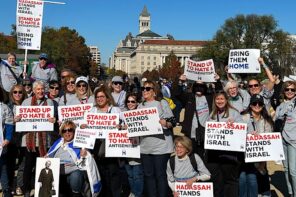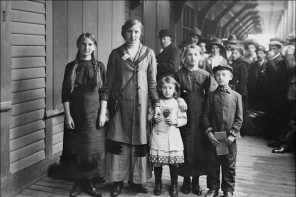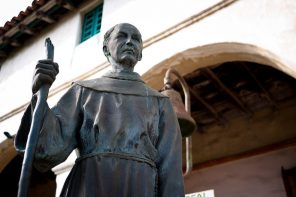As in many other parts of the world, Canadian news is often filled with the latest updates on the quasi-criminal actions and clearly racist and sexist pronouncements of US politicians. In the past month, however, Canadians who follow the news have had to look their own racism, sexism, and criminality straight in the eye. In the space of two weeks in February 2018, two juries acquitted white men accused of murdering young Indigenous people, raising charges of systemic injustice from Indigenous communities and their settler allies.
In 2016, Colten Boushie, a 22-year-old from Red Pheasant First Nation, was shot in back of the head at close range by white farmer Gerald Stanley. Stanley claimed it was an accident and on February 9 the jury—from which all potentially Indigenous jurors had been excluded—acquitted him even of the lesser charge of manslaughter. In 2014, Tina Fontaine, a 15-year-old from the Sagkeeng First Nation who was supposed to be in the care of provincial child services, was bound in a blanket and thrown into Winnipeg’s Red River. On February 22, the man accused of killing her was acquitted by the jury on the grounds of insufficient evidence.
The public mourning and protest that has followed in the wake of these acquittals has both galvanized and polarized public debate about ongoing racism and colonialism in Canada. While Indigenous writers such as Gina Starblanket and Dallas Hunt have penned powerful critiques of settler colonialism in the opinion sections of major newspapers, social media has been awash in unabashedly racist comments, including those of an RCMP officer who posted on Facebook that Colten Boushie “got what he deserved.” While some proclaim that the verdicts have shattered efforts at “reconciliation” between Indigenous nations and Canada, others, including an interdenominational group of bishops on the prairies, issued statements about the need to “work for reconciliation and peace among all people in our communities and in our nation.”
“Reconciliation” is a concept that many Christians and Canadians find comforting; with its history in Christian rituals of absolution, this is not surprising. The term came to greater prominence in Canadian political discourse with the 2015 publication of the final report of Canada’s Truth and Reconciliation Commission (TRC), focused on the church-state collaboration of “Indian Residential Schools.” These were boarding schools for elementary- to high-school-aged Indigenous children to which children were often forcibly taken by police or government officials, and from which many never returned. After detailing in seven volumes what it called the “cultural genocide” enacted by the schools via Christian conversion, physical and sexual abuse, and attempts at language annihilation, the TRC report highlighted “94 Calls to Action.” Amounting to a decolonization “to do” list for settlers, the Calls include specific tasks for universities and for Christian institutions, such as “the need to respect Indigenous spirituality in its own right.” Both Christian and non-Christian settlers in Canadian seem to desire peace and reconciliation with Indigenous peoples and yet injustice remains. Why?
In short: land. While calling for the repudiation of the Christian Doctrine of Discovery that is the shaky ground of all colonial sovereignty in the Americas—including in Canada and the US—the TRC report largely skirts concerns about land restitution. Similarly, the bishops’ statement ignores the colonialism and dispossession at the heart of issues of injustice, racism, and prejudice in Canada. If settlers in North America want to respect Indigenous spirituality then it has to begin by tackling the question of land.
Swampy, virgin, and cheap
Canadians who tell stories about land in a public setting can no longer do so while ignoring that they (we) are treaty people—that Canadians live in nation-to-nation relations with Indigenous peoples. As treaty people, part of the responsibility of settlers is to know and tell stories that acknowledge Indigenous land is the very same territory that they also call home. That’s what a land acknowledgement is: recognizing that Indigenous sovereignty was not erased by treaties or the Indian Act.
Increasingly common at the beginning of public events and in school classrooms across the nation, land acknowledgements are a ritual enunciation of Indigenous territory. They also call settlers to learn about the treaties that allowed earlier Canadians to become settlers in the first place (at least in those parts of Canada covered by treaties). This requires doing the careful work of listening to Cree, Anishinaabeg, and other Indigenous neighbours to figure out collectively how to live together after years of Canadian attempts to destroy Indigenous languages, families, and systems of governance.
With this very fraught and lively discussion of questions of reconciliation and settler dispossession and violence dominating the news cycle, it was particularly surprising—even breathtakingly so—to find a personal essay published in the Globe and Mail that celebrated settlers buying plots of Manitoba land with no awareness of Indigenous presence. Appearing just the day before the announcement of the verdict in the trial of Tina Fontaine’s accused killer, “Buying into my Mennonite roots” was a nostalgic ode to Mennonites’ “long history” of buying up land that lies “beyond the fringe of civilization.” Celebrating Mennonite men, including his father, as farmers who transformed the “wilderness,” the author Cameron Dueck erased an even longer history of Cree, Anishinaabe, and Métis peoples who still live on the land that he called “swampy,” “virgin,” and “cheap.” In reality, Mennonites settled on the long inhabited territory of Treaty 1 and Treaty 5.
As two scholars of religion and who avidly follow the news, and whose Mennonite ancestors also settled in the territories of Treaties 1 & 5, we were angered but not entirely surprised by this news cycle juxtaposition, in which the ongoing violence of settler colonialism was blithely ignored in the celebration of settler ingenuity. Our ancestors, both men and women, also came to Manitoba from Russia in the 1870s, attracted by government promises of “free land” which they turned into tightly-knit farming communities shaped by commitments to pacifism, adult baptism, and family. As Gina Starblanket and Dallas Hunt showed in their own Globe and Mail essay, however, the land that settlers imagined as free wilderness was neither free nor empty. And, they write, the deadly effects of the myths of settler masculinity persist today, as the trial of Colten Boushie’s killer showed.
Even if Mennonites thought they had found a pacifist’s paradise in the prairies, their deeds to the land came at the price of violence to Indigenous peoples who still understood the land as their own. Mennonite migration from Russia to Manitoba in the 1870s is a case study in white privilege: they received land that Indigenous peoples, specifically Métis communities, had been promised after the Riel rebellion. Métis parishes also used the news to stake their claims, publishing demands for a reserve in Le Metis and The Manitoban in 1871, while Cypress Hills Métis petitioned the government for their own reserve in 1878. Both claims included land that would instead be reserved for Mennonites. If Mennonites want to say that their (our) identity is bound up with buying land, then they need to reckon with the injustice of the undeserved advantages on which this identity is built.
Settler colonialism doesn’t refer to something that is over and done with, but rather to a persistent way of relating to places and people that obscures and denies Indigenous connections to land. As Starblanket and Hunt write, “it is not only Indigenous peoples’ physical bodies that are under assault in processes of colonial dispossession, but also our long-standing relationships to our ancestral lands.” Telling stories of settlers “fighting against nature” was an intentional ploy by Canadian officials to build a nation based on a grain economy, which pitted Mennonite and Indigenous relations to place against each other. As long as Mennonites, and other settlers, keep telling of their triumph over muddy soil and swampy bogs without acknowledging Indigenous presence, they continue to replicate the violence of settler colonialism. This is the violence that the Truth and Reconciliation Commission’s Calls to Action have called Canadians to examine, acknowledge, and repudiate.
Mennonites are indeed people of the land. Mennonite religious identity has found expression through relations to place in villages, farms, and gardens. We are not arguing that Mennonites—or any other group—should deny this part of their history. But it is the responsibility of all settlers to know the deeper stories of their land. For Mennonites in particular, they must acknowledge that the farms which their ancestors plowed would never have come to be if not for the generosity of Indigenous peoples who entered into treaties with the Crown, and the ensuing duplicity of the government as it repeatedly broke treaty commitments.
Métis writer Maria Campbell recently gave a lecture at a public event focused on building “capacity” for reconciliation, at which she insisted that she doesn’t want settlers to feel guilty or to ask her what to do in order to reconcile. Instead she told a story. Campbell grew up in Saskatchewan, with Mennonite settlers nearby. Campbell’s grandmother became good friends with a Mennonite midwife. They exchanged medicinal recipes, gathering plants and herbs, cooking, baking, and delivering babies. They spoke two different languages—Cree and Low German—and yet they shared a mutual love of the land. They knew the land, learned from it, and spent their days working on it. Out of their commitment to nurturing creation and new life came respect, laughter, and friendship.
Being treaty people requires challenging the falsehoods seeded by stories that tell of “civilization” emerging from tamed wilderness; it also requires listening to and reading the words of Indigenous peoples. Reading books like Maria Campbell’s Half-Breed, Eden Robinson’s Son of a Trickster, or Harold Johnson’s Two Families is one place to start. Reading the news can be another way to listen, but you have to work much harder to find strong Indigenous voices in mainstream media, where the stories of Indigenous victims are much more prominently featured. Thankfully, however, the voices of Indigenous journalists and writers such as Connie Walker, Angela Sterritt, and Alicia Elliott are rising.
Reconciliation may not be a concept robust enough to bring more just relations among treaty people into being, but it has played an important role in provoking public debate—both productive and malicious—that has brought a greater range of voices into the stories we hear.





